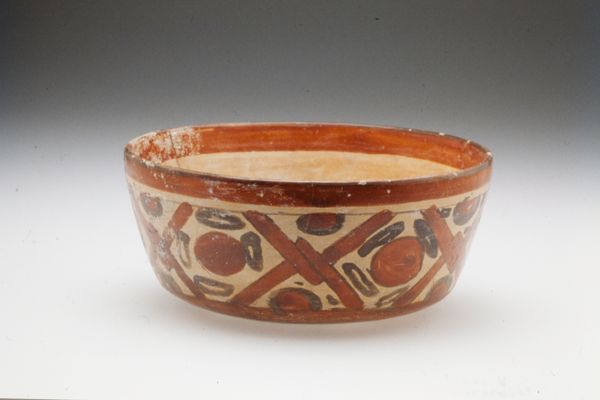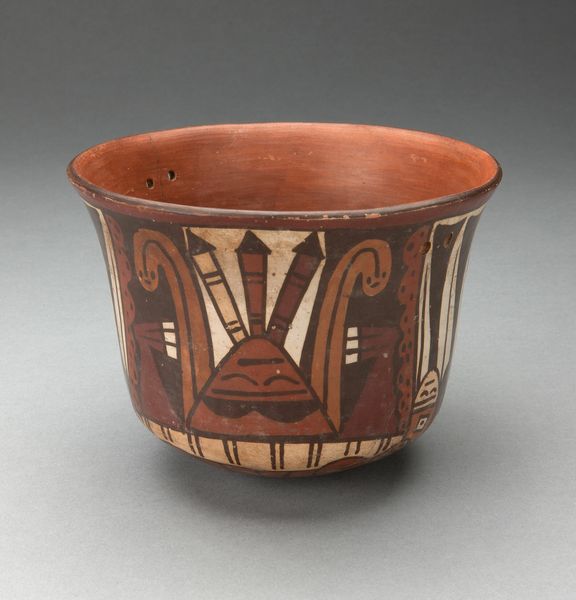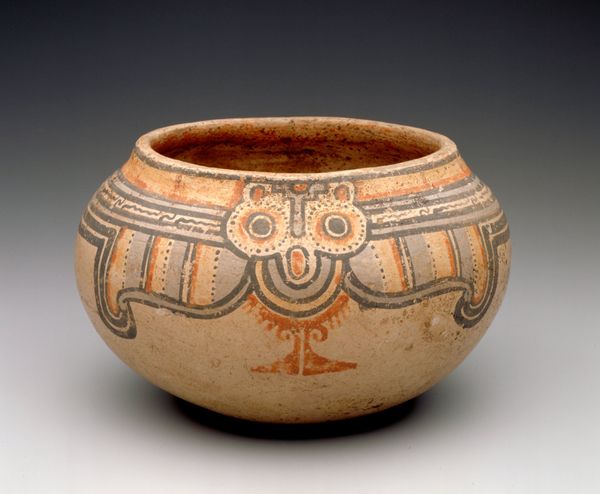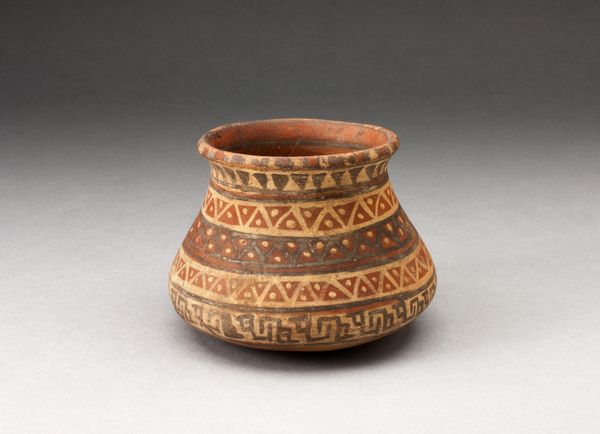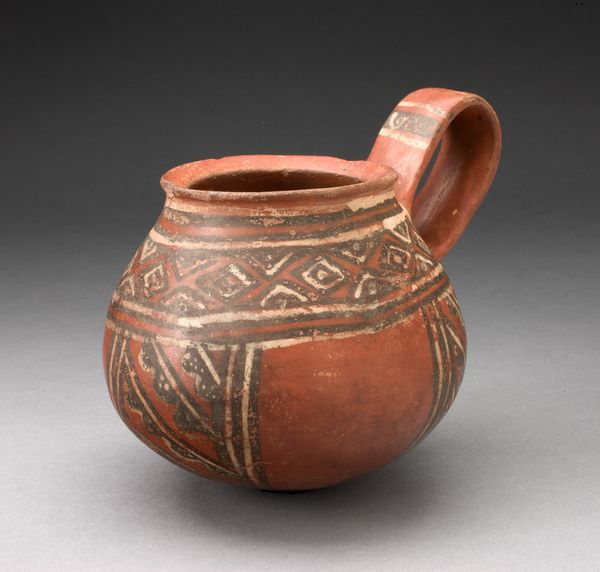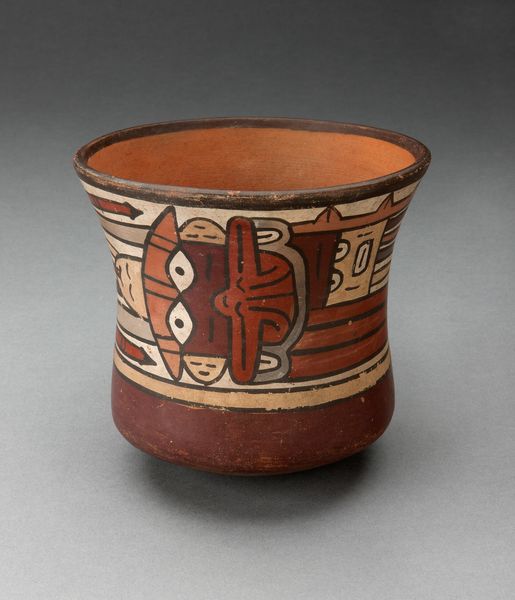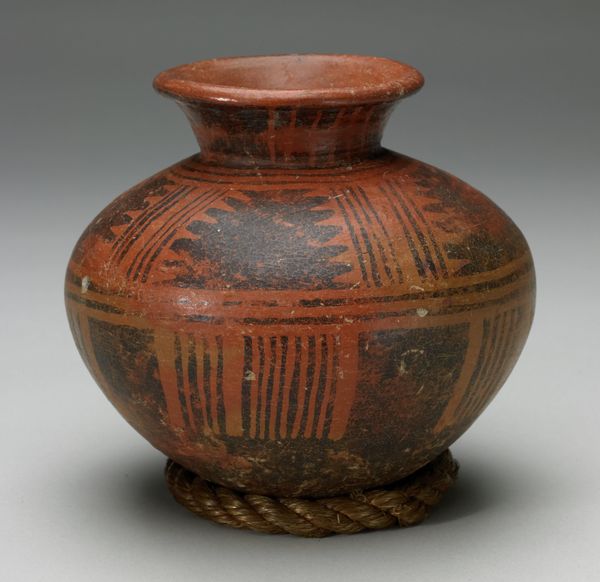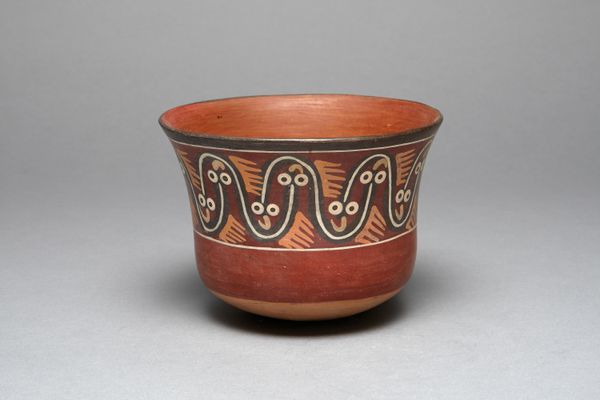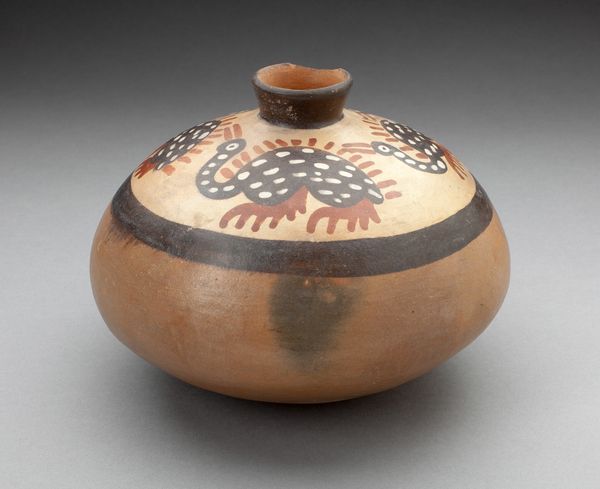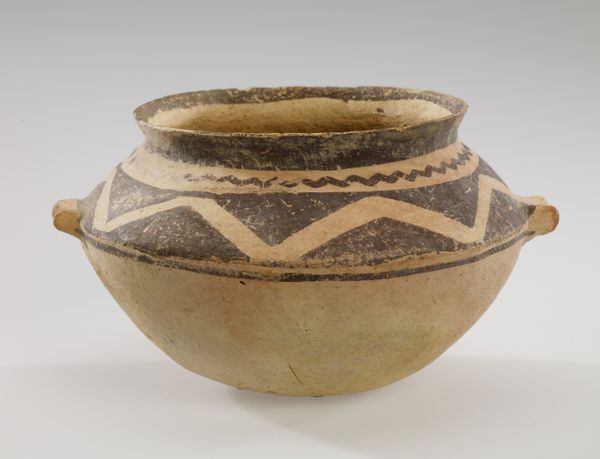
ceramic, earthenware, terracotta
#
ceramic
#
earthenware
#
geometric
#
ceramic
#
earthenware
#
terracotta
#
indigenous-americas
Dimensions: 3 1/2 x 4 x 4 in. (8.9 x 10.16 x 10.16 cm)
Copyright: Public Domain
Curator: Looking at this globular bowl, which dates approximately from 201 to 700 AD and is attributed to the Michoacan people, I'm immediately struck by its earthy tone. What's your initial take, Editor? Editor: Warm and…ancient. It feels profoundly connected to the earth, literally! The color and those almost faded, swirling patterns make me think of whispered stories. It's very tactile. Curator: Absolutely. The material itself is earthenware ceramic, reflecting a readily available resource. The choice of such humble materials tells us about the socio-economic context and what materials were prioritized in daily production. It speaks volumes about the potters and the world they inhabited. Editor: Right. But there's artistry too. It's clearly not just functional; look at the geometric designs scratched onto the surface. The simple decorations make me want to try deciphering this pot, as if each spiral and line could give me insight. It makes you feel that ancient objects were more human! Curator: Well, we could consider how labor intersects here; each line, each circle represents time, skill, and practice—all vital elements of production. It highlights both the utilitarian needs and symbolic expressions in material culture. Editor: It almost looks casual. Imagine holding it. The roughness and little variations – you feel the human hand so directly. To me, it represents pure creativity in form. Someone was compelled to decorate it and now here it is… amazing. Curator: Considering it’s held in the collection of the Minneapolis Institute of Art, we must reflect upon its journey, from a common use object to display in an art institution. How the piece changed its social and economic meanings after traveling across the globe. Editor: Indeed. Seeing this bowl, its story unfolding in these designs—reminds me that humanity expresses itself creatively, regardless of circumstances, which adds extra significance to materials like earthenware. Curator: I find it fascinating how focusing on material processes, from extraction to decoration, allows us to reassess its historical narrative, understanding cultural exchange beyond conventional aesthetic analysis. Editor: Beautifully put! What begins as earth is transformed into history itself.
Comments
No comments
Be the first to comment and join the conversation on the ultimate creative platform.
